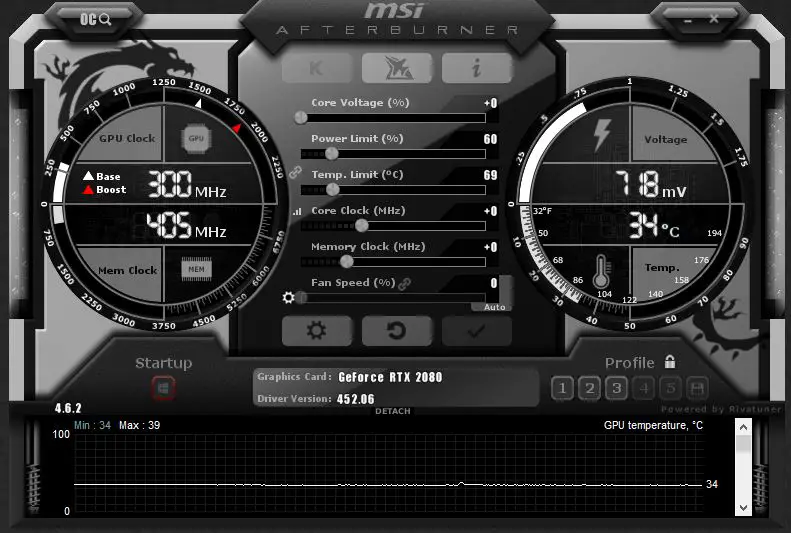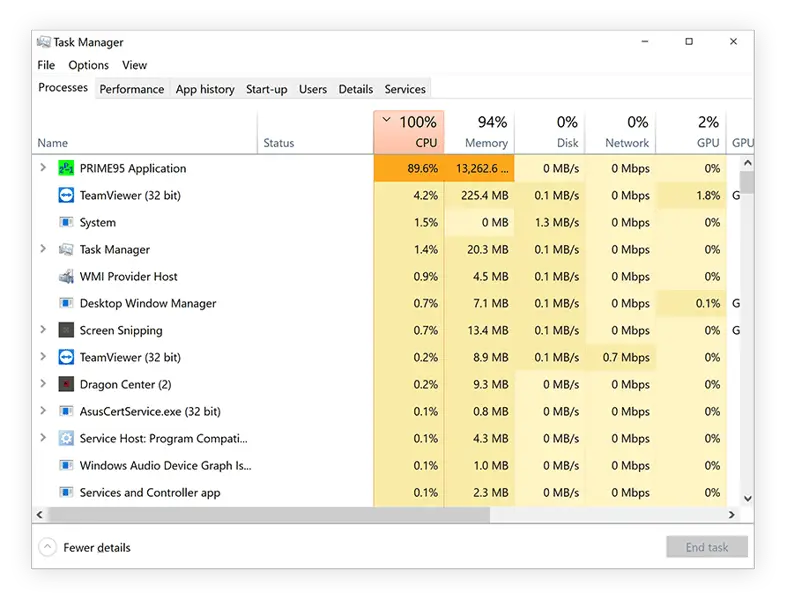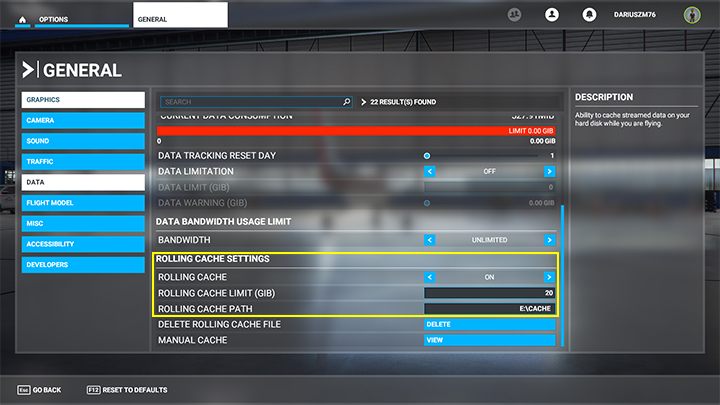The fact that your GPU is frozen at 7–10% while your CPU is operating at 100% or higher while you are playing MSFS is obviously concerning.
But why would your MSFS not using GPU?
CPU bottleneck is the main reason msfs not using gpu at all or barely using it. Inadequate optimization, DX11 rendering, and disabled rolling cache are other significant factors in MSFS’s lack of GPU usage. This problem can be resolved by overclocking the CPU, updating the drivers, activating the rolling cache, and tweaking the graphics settings.
Want to learn more about the causes and solutions to this problem? Then keep on reading-
Why is Your MSFS Not Using GPU?
Annoying issues like MSFS not using GPU or logbook not working have several reasons behind them. Some of these are easier to fix, but others may require some extensive process. Let’s see which specific reason is behind your MSFS not using GPU-
Reason 1: CPU Bottleneck
One of the main reasons behind MSFS not using GPU is a CPU bottleneck. A CPU bottleneck occurs when the processing power of the CPU or Central Processing Unit limits the performance of a computer system.
When the CPU is fully utilized and can not process any more instructions, it causes other system components such as the graphics card, storage, and memory to be underutilized.
So when you launch MSFS is not able to properly utilize the GPU. This is more common when the graphics card is significantly more powerful than the CPU.
To check for such bottleneck issues, you can use the bottleneck calculator. A new CPU is required if your CPU bottleneck is 20% or above.
Solution:
The most efficient but expensive solution is to upgrade your CPU, as you will notice a significant boost in performance. But, that is not a possibility for everyone.
An alternative is to attempt overclocking your CPU. By overclocking a processor, you can get it to operate at a higher speed than the one the manufacturer has certified. As a result, the CPU can process the data considerably more quickly without encountering bottleneck problems.
However, without a thorough understanding of the entire process, it is advised not to overclock your CPU on your own. Getting help from a professional is the best scenario in such cases.
You can also deal with the bottleneck issue by lowering the load on the bottleneck component. Task Manager allows you to stop unnecessary background tasks. It will give your game a significant boost in frame rate.
Another thing you can try is to raise the graphical settings of the game. This increases the demand placed on your GPU. In order to do this you will have to adjust the game graphics to a higher resolution, such as 4K.
This will make the GPU spend more time rendering high-resolution images while under a heavy workload. It might cost you a couple of frames in the process. Nonetheless, the experience will be much smoother due to more consistent frame rates. Even g-sync monitor flickering can be avoided in this way.
Reasons 2: Poor Optimization
Poor optimization can cause Microsoft Flight Simulator to not use the GPU effectively or at all. A game or software’s loading time, frame rate, CPU usage, and other configuration needs to be adequately optimized.
Otherwise, it will rely more heavily on the CPU for processing graphics, which can lead to CPU bottleneck issues. You can check the frame rate, CPU usage, and other configuration from the Task Manager.
In addition to Task Manager, Windows also includes a built-in Resource Monitor tool. This provides more detailed information about your computer’s performance. You can access it by searching for “Resource Monitor” in the Start menu or by typing “resmon” in the Run dialog box or you can press Windows+R for it to open.
Moreover, Microsoft Flight Simulator has built-in settings that allow you to adjust graphics quality, resolution, and other performance-related settings. These settings can usually be accessed from within the game’s menu
Solution:
In order to optimize your computer the first thing you should do is to update the graphics driver: You can check for updates by visiting the website of your graphics card manufacturer.
On the other hand, Windows usually has a limiting the amount of power that your GPU can use. To change this, go to the Control Panel and select Power Options. Select the High-Performance power plan to give your GPU more power to work with.
You can also adjust Windows’ visual effects to focus more on performance. To do this, right-click on My Computer and select Properties. Under Advanced system settings, click on the Performance section.
Select Adjust for best performance and click Apply. You can track your GPU usage with apps like MSI Afterburner or GPU-Z while playing MSFS.

In order to adjust the Graphics Options in MSFS, open MSFS and go to the Options menu. You will find the Graphics Quality under Graphics Option. Make sure it is set to High or Ultra. Additionally, make sure that the Render Scaling is set to 100% or above.
All of these settings should improve the performance of graphics in your game and increase the usage of GPU as well.
Reason 3: DX11 Limitations
Due to the limitation of DX11 API, graphically-intensive games like MSFS are not able to fully utilize the capability of GPU. This is one of the main reasons behind MSFS not using GPU.
DirectX 11 or DX11 is an older version of Microsoft’s graphics API that was released in 2009. It is still widely used today, but it is not as efficient at utilizing modern hardware as newer APIs like DirectX 12 or Vulkan.
If MSFS is using the DX11 API, it may not be able to fully utilize your GPU’s capabilities, resulting in lower frame rates or lower-quality graphics.
Solution:
Although DX11 or DX12 is still a topic of discussion, using DirectX 12 or newer API Vulkan is the most viable Choice. These APIs will definitely provide better performance and more efficient use of modern hardware as well. And you will be able to enjoy MSFS with much better graphics as well.
Reason 4: Display Issue with Windows Task Manager
The window task manager is known to display inaccurate information. It should not be used to check the GPU and CPU working rates. A lot of gamers have noted that the Windows task manager frequently displays inaccurate information.

So, when you check the GPU ratio, you might be seeing numbers that are extremely low even though the real GPU usage is at its expected level.
Solution:
In order to check the GPU usage rate you can try using the MSI Afterburner. It is compatible with a wide range of graphics cards and has a user-friendly interface that is easy to use and navigate.
It also provides users access to a wide range of features and settings, allowing them to customize their graphics card settings to suit their needs. It also has an overclocking feature in it.
Reason 5: Rolling Cache Turned Off
Although it is not very common but sometimes rolling cache being turned off can cause MSFS to not use the GPU. The rolling cache is a feature that allows MSFS to store frequently used scenery data on your computer’s hard drive.

This can help reduce loading times and improve performance. But when the rolling cache is turned off it will result in longer loading times or more stuttering and lag, which could indirectly impact GPU usage.
This occurs mostly when flying in newer areas, as there’s no previous record. Without a rolling cache, the game will struggle to load data and create bottlenecks in data loading. As a result, the GPU won’t be properly utilized.
Solution:
You need to turn on the rolling cache in order to solve this issue. Follow the steps below to turn it on-
- First, open the MSFS and go to the Options menu. Then select the General tab and scroll down to the Data section.
- In the Data Section, you will find the Rolling Cache option. Turn the Rolling Cache option On.
- After that, you need to set the Rolling Cache Size by dragging the slider to the desired value. The recommended size is usually around 8-16 GB, depending on your available hard drive space.
- Next, choose the location where you want to store the Rolling Cache. Click on the Choose Path button and select a desired folder on your hard drive.
- You need to click on Apply & Save after this to save the changes you made.
Reason 6: Ram Bottleneck
Just like CPU bottleneck RAM can cause bottleneck issues as well. Not having enough RAM capacity can lead to GPU being utilized less.
RAM, also known as random-access memory, is a cache that houses all the crucial information that your computer needs to function. Your HDD or SSD transfers crucial data to your Memory, including textures, brightness, and other elements.
The data is then sent to the CPU. Once the data has been identified by the CPU, it is sent to the GPU to be decoded and shown on the display.
But if your computer’s RAM is not sufficient to handle the game’s memory requirements, it can lead to longer loading times. Moreover, the frame rates will drop along with lower-quality graphics. Thus creating a bottleneck issue.
This can indirectly impact GPU utilization. As the game may not be able to load and process data quickly enough to keep up with the GPU’s rendering capabilities.
Solution:
You should use higher-capacity RAM or at least use the ones with dual-channel memory in order to solve this issue. Although the minimum requirement is 8 GB, having 16 GB RAM will ensure the smoothest run of the game with high graphics settings and demanding add-ons.
Besides that, the dual-channel memory sticks need to be identical. And it should be inserted into similar slots in the motherboard.
Faster frame rates and less stuttering will be achieved by using this dual-channel memory. And, you will observe an increase in GPU utilization as well.
You can also experiment with overclocking your RAM to make it run quicker. But, this is a difficult procedure that will only raise GPU use by a few percent.
What to do if none of the Solution Works?
If none of the above solutions is working for you then you may need to take some drastic measures. It is usually recommended to reinstall Windows in such cases. With new Windows installed, you are bound to see changes in the percentage of GPU usage. And if the problem still persists then we recommend taking it to a customer care for further assistance.
Frequently Asked Questions (FAQs):
Is MSFS more Dependent on the CPU or the GPU?
Both the CPU and GPU are utilized heavily by Microsoft Flight Simulator. In order to produce high-quality images and expansive, intricate environments, MSFS demands a powerful graphics card in addition to a powerful processor. This is to execute the complicated computations and physics required in simulating flight.
Does NVMe Speed Make Any Difference on the Gaming Performance?
Absolutely, NVMe speed does have an impact on the performance of games. Compared to games installed on a conventional hard drive, NVMe SSDs allow games to start up three times faster. Games will not only load more quickly but there won’t be much time lost on loading screens between the game itself and the game menu.
Which GPU is the most suitable for MSFS?
The MSI RTX 4070 Ti is the best overall GPU for MSFS. Get the ASUS ROG Strix RTX 4090 for your msfs if you don’t mind spending a little more money. This significantly enhances the graphics and elevates your game experience. The ASUS ROG Strix RX 6800 XT, on the other hand, is often recognized as the finest graphics card n the affordable range.
Final Words
That is everything on MSFS not using GPU. Although it is mainly caused by CPU bottleneck, the other reasons are also worth checking.
Hopefully, you were able to identify the particular reason why msfs is not using the GPU on your computer. You should contact customer service for a better investigation of the issue if it persists.
Until next time!
